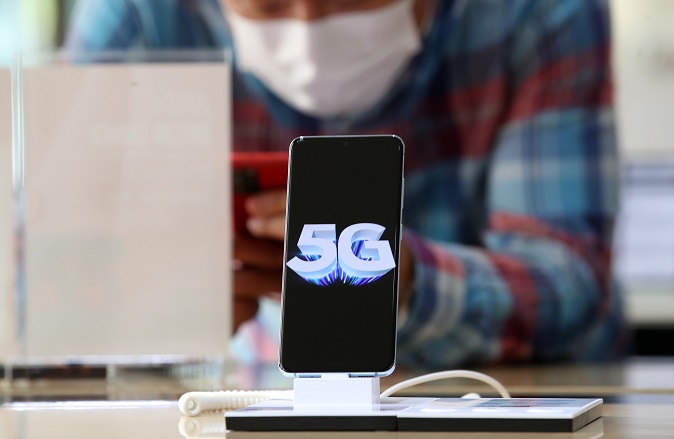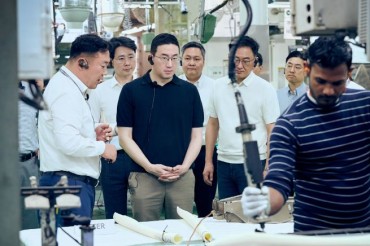SEOUL, Dec. 30 (Korea Bizwire) – South Korea’s 5G download speed and overall quality improved in the second half of the year from the first half as the country races to deploy nationwide coverage of the latest generation network, a report showed Wednesday.
The average download speed on the high-speed network from the country’s three major mobile carriers — SK Telecom Co., KT Corp. and LG Uplus Corp. — stood at 690.47 megabits per second (Mbps) in the second half of the year, up 33.91 Mbps from the first half, according to data from the Ministry of Science and ICT.
SK Telecom had the fastest average download speed at 795.57 Mbps, followed by KT at 667.48 Mbps and LG Uplus at 608.49 Mbps.
The country’s average 4G LTE download speed reached 153.1 Mbps, more than four times slower than the average 5G speed.
The ministry publishes data on mobile network quality biannually to encourage network investment by mobile carriers.

The logos of South Korea’s three major carriers — KT Corp. (L), SK Telecom Co. (C) and LG Uplus Corp. (R) — are shown in this file photo taken July 8, 2020. (Yonhap)
South Korea was the first country to commercialize 5G in April last year and has quickly built up a significant 5G user base of nearly 10 million as of end-October, around 14 percent of the country’s total 70 million mobile subscriptions.
The network, however, has faced quality issues, such as limited coverage and slower-than-expected speeds, prompting more than half a million 5G users to switch to 4G LTE through August this year, according to Rep. Hong Jung-min of the ruling Democratic Party.
The latest report found that the network’s quality and accessibility improved compared to the first half of the year.
Users could stably connect to the latest generation network on average 90.99 percent of the time in public locations equipped with 5G, compared to 67.93 percent of the time in the first half of the year.
Devices also switched to 4G LTE from 5G during downloads 5.49 percent of the time on average compared to 6.19 percent in the first half of the year.
Average 5G latency, however, stood at 30.62 milliseconds, similar to 34.59 milliseconds on 4G LTE, according to the report.
Hong Jin-bae, director general of the ICT ministry’s telecommunications policy bureau, said in a briefing that the relatively high latency on 5G is likely due to South Korea’s use of non-standalone 5G, which requires support from 4G LTE.
“We are encouraging mobile carriers to transition to standalone 5G, and while they have yet to make announcements, we understand that such plans are making progress,” Hong said.
Coverage for the latest generation network grew as the number of subway stations across the country equipped with 5G network by the three carriers rose to 424 on average as of November, compared to 313 in July.
The report also found that public facilities, such as malls, theaters and hospitals, which had 5G coverage by the three carriers reached 3,486 on average across 85 cities.
South Korea is aiming for nationwide 5G coverage by 2022, and the three major carriers have promised to spend up to 25.7 trillion won (US$24 billion) in total to update network infrastructure by that year.
(Yonhap)







